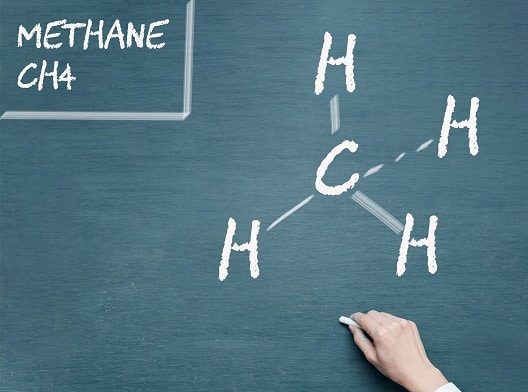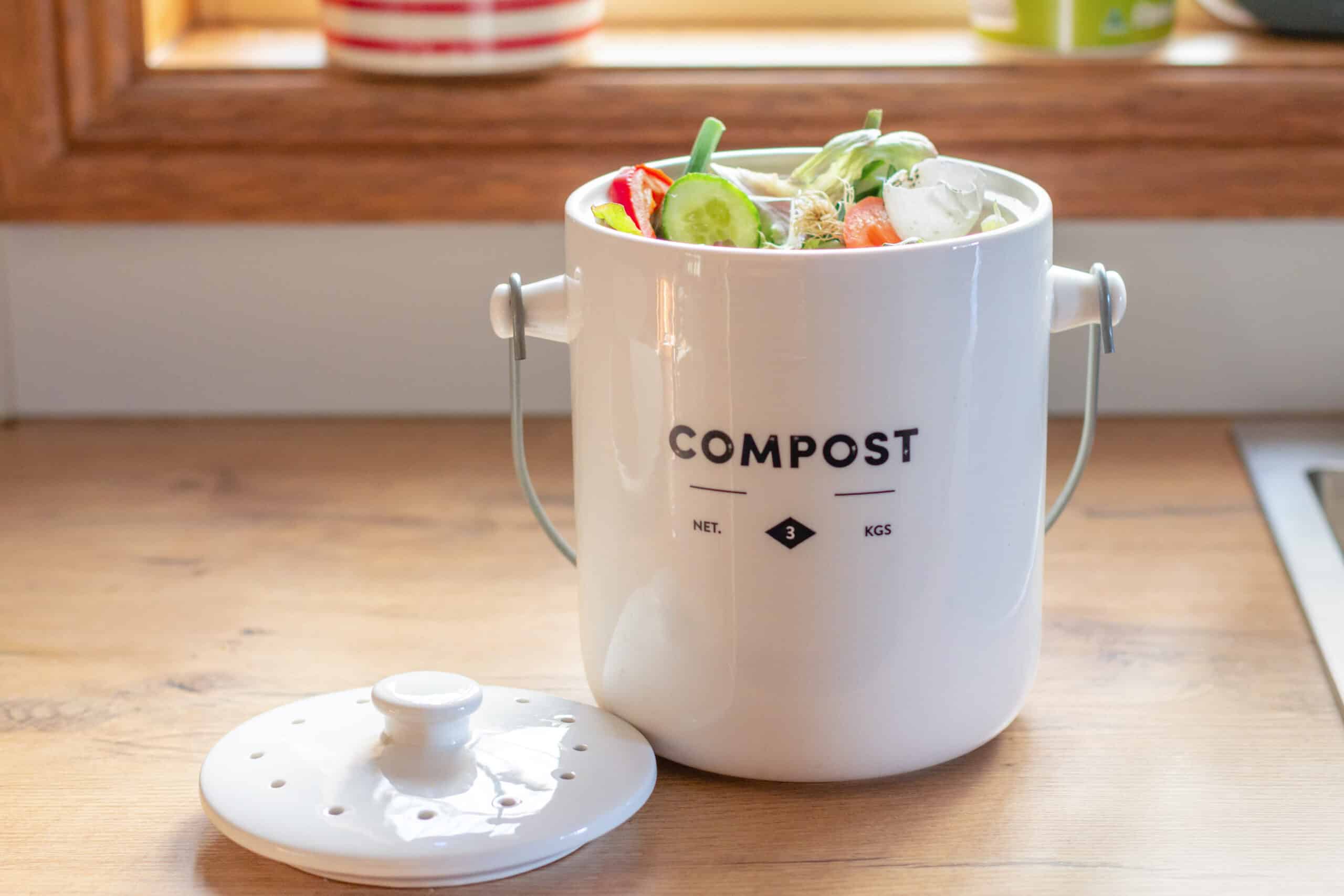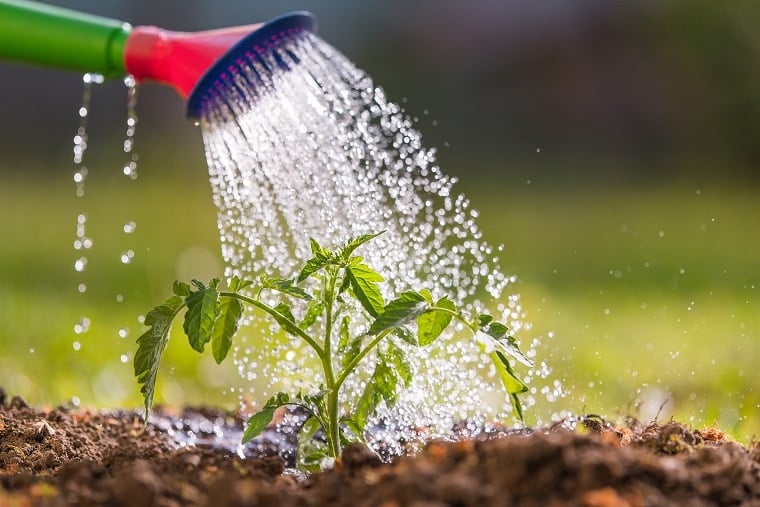
Definition of biogas
Merriam Webster defines biogas as “a mixture of methane and carbon dioxide produced by the bacterial decomposition of organic wastes and used as a fuel.”
Biogas is a renewable energy source produced from raw materials like food waste, manure, sewage, agricultural waste, and plant material. The process that transforms this organic waste into a mix of gases is called anaerobic digestion and is a natural fermentation process in which bacteria break down the organic matter into its components until all that is left are gases and a residue called digestate.
The biogas production process
The biogas production process is practically natural fermentation in an oxygen-free environment. In nature, it can occur in marshes and swamps, where water helps to seal natural chambers that lack oxygen.
Biogas plants are artificial environments, but the process inside the sealed digesters is 100% natural.
At first, biowaste must be crushed into smaller pieces, and, often, some water is added to accelerate the chemical reactions inside the digester. Then, bacteria decompose organic matter to obtain the right mix of gas.
The process consists of four stages:
- Bacteria start breaking down complex carbohydrates, proteins, and fats and turn them into sugars, amino acids, and fatty acids through a process called hydrolysis.
- Acidogenic bacteria transform these substances into volatile fatty acids (VFAs), alcohols, and gases. This second stage is called acidogenesis.
- In the third stage, acids and alcohols become acetic acid, hydrogen, carbon dioxide, and other gases through a process called acetogenesis.
- In the last stage, methane is produced from the substances now present inside the digester, and the process is called methanogenesis, as methanogens are responsible for completing the process.
This process is optimized when the temperature inside the digester stays between 30 to 38 degrees Celsius (86-100 Fahrenheit). The procedure’s success depends on the chemical composition of the waste fed into the digester. If the raw materials are too acid or have too much nitrogen, you risk disturbing the balance inside the digester, resulting in inconsistent production levels.
Moreover, not all organic wastes have the same fermentation timeline. Bacteria can easily break down food waste, fats, oils, and greases, but livestock waste can be more challenging when fed into the digester. By mixing multiple types of waste inside the digester (co-digestion), you can accelerate the fermentation process and generate consistent amounts of biogas.

Main chemical composition of biogas
Biogas composition consists primarily of methane and carbon dioxide, but the mixture of gases also includes a series of other substances and sometimes traces of water.
The chemical composition of biogas:
- Methane (CH4, 50-70%)
- Carbon dioxide (CO2, 25-50%)
- Other gases: nitrogen (N2, less than 5%), hydrogen (H2, less than 1%), and oxygen (O2)
- Traces of hydrogen sulfide (H2S, less than 3%), water vapor (H2O, less than 10%), and ammonia (NH3, less than 1%)
[Tabel from: https://www.biogas-renewable-energy.info/biogas_composition.html]
The chemical composition of biogas varies with a series of factors, from the quality of the organic waste put inside the digester to the digester’s feeding rate and the temperature and humidity inside the digester.

HomeBiogas 2
Designed for the next generation of green innovation.
As it contains hydrogen sulfide, carbon dioxide, and water, biogas is highly corrosive, so all the systems built for producing, transporting, storing, and using it must be made with specific materials.
Biogas must often be treated to enhance its properties — different chemical reactions remove some components, such as hydrogen sulfide, water, or carbon dioxide, to obtain biomethane. This removal process requires a more complex system for producing biogas, including working with corrosive substances.
Biogas physical characteristics
Thanks to its similar properties, biogas can substitute natural gas with a significant impact on the environment. Here’s how biogas composition can change its physical characteristics and how they’re different from natural gas: Table
If you use equal amounts of biogas and natural gas, biogas produces twice fewer calories by combustion.
Biogas also helps keep manure from landfills and, therefore, reduces the amount of methane released directly into the atmosphere. Methane is a greenhouse gas with effects 34 times more potent than carbon dioxide’s, so by redirecting it towards biogas production, we get to reduce its impact on climate change.
It’s also important to note that when biogas is combusted (when used as cooking gas, for instance), it still generates carbon dioxide. However, it all comes from plants, which had naturally removed this gas from the atmosphere. Therefore, these emissions are considered carbon-neutral, as the amounts of new CO2 added to the atmosphere are minimum.
Biogas usage and applications
Thanks to its physical characteristics, biogas can be used as an alternative to fossil fuels. It can be used similarly to natural gas in water and space heating, drying, absorption cooling, steam and electricity production, and transportation. The more organizations and governments become aware of fossil fuel’s impact on climate change, the more they’re interested in innovating and finding new ways to shift to clean energy sources, including biogas usage.
The most popular applications for biogas are:
1. Cooking gas
Direct combustion is a more straightforward way to use biogas to generate heat and lightning, being an increasingly popular alternative to fossil fuel energy in developing countries. A gas pipe connects the digester to a biogas cooking stove, so you can produce cooking gas and manage waste with minimum impact on the environment.
2. Combined heat and power
A more complex way to use biogas is co-generation or combined heat and power process (CHP), in which case you simultaneously produce electricity and heat with biogas. This application is more suitable for industrial biogas plants that manage large amounts of waste than for domestic use. These systems can supplement energy production in rural areas that otherwise are forced to remain off-grid.
3. Transportation
Biogas can also be used as vehicle fuel if purified and treated to match natural gas quality. The extra effort can pay off, as this shift could significantly impact climate change. By switching to biogas, the transport sector can reduce greenhouse gas emissions by 60 to 80%, compared to gasoline and diesel.
Pros and cons of using biogas
Biogas advantages
- It’s an eco-friendly, renewable source of energy that has a smaller impact on the environment than fossil fuels.
- Biogas combustion is carbon-neutral and reduces greenhouse gas emissions.
- Using biogas can reduce the dependence on oil imports in many countries.
- Biogas production is a cost-effective waste management solution that improves environmental quality by keeping waste away from landfills and water sources.
- The biogas production process also generates organic fertilizer for plants.
- Biogas plants benefit local economies by creating new jobs.
Biogas disadvantages:
- Producing and purifying biogas still needs to be improved significantly to make it effective at scale.
- The biogas production process is suited for specific climates and geographical areas, as it requires consistent supplies of raw materials and constant temperature inside the digester.
- Treated biogas is still not 100% pure, so more research is necessary before we can use biogas as vehicle fuel on a scale.
- Biogas is an eco-friendly energy source only as long as it comes from existing waste. If people start producing raw materials only to transform them into biogas, the process no longer positively impacts the environment.
- Biogas is easy to produce in rural areas where organic materials are easy to procure, but biogas plants are less effective in dense urban areas.

Conclusion
Its properties make biogas an effective, eco-friendly alternative to natural gas and other fossil fuels. Its physical structure and chemical composition enable biogas to be a green energy source we can use for heating, absorption cooling, electricity production, and with further innovation, transportation.
Currently, biogas can be produced efficiently for domestic usage with systems easily installed, such as HomeBiogas, on your property to help you manage waste and produce cooking gas. These systems can help families cut down carbon dioxide emissions by almost six tons a year.







